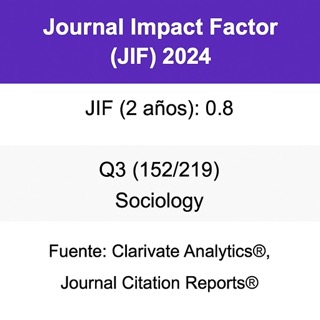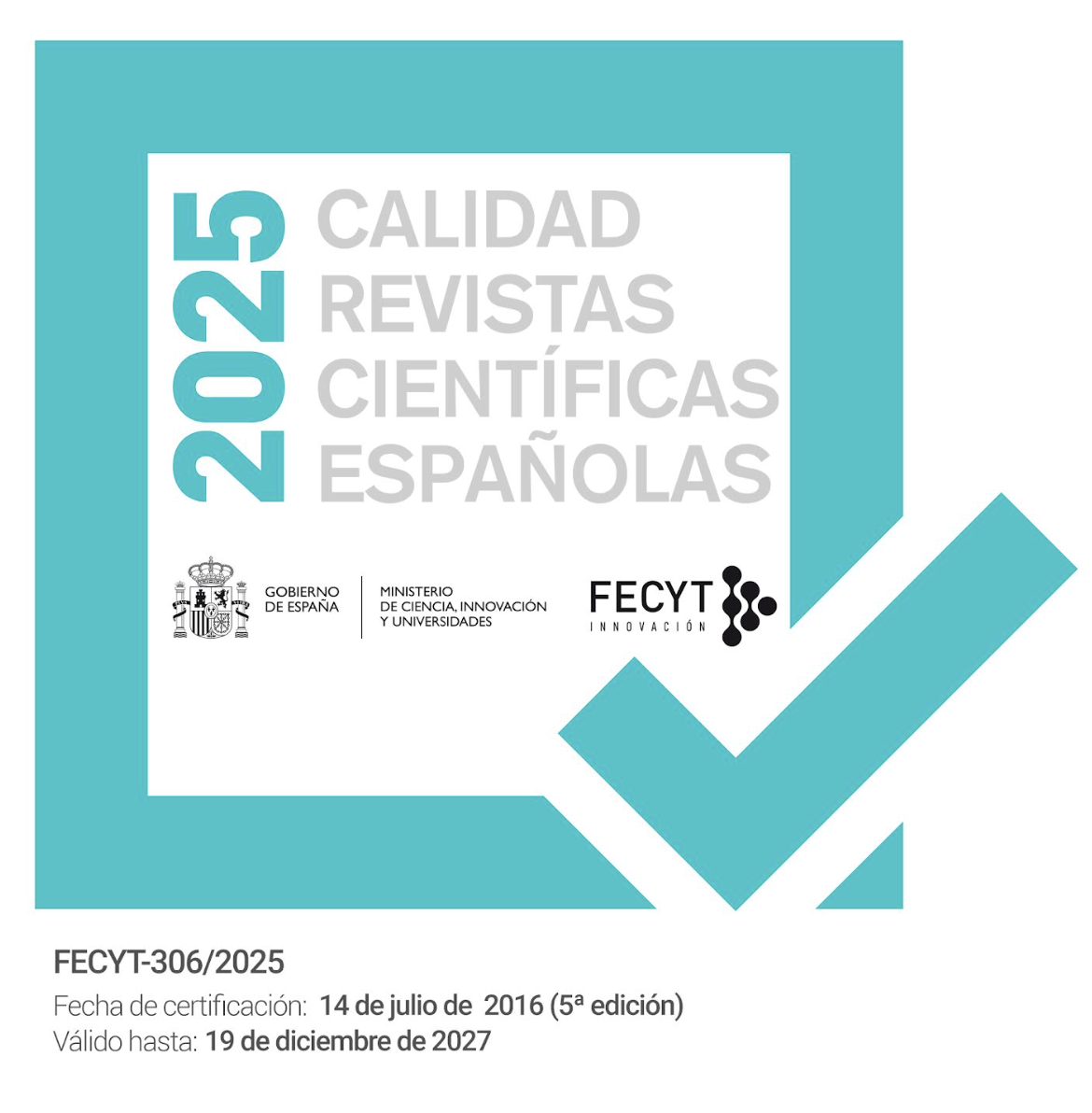Cauces socioespaciales: la segregación y el arraigo en Madrid
DOI:
https://doi.org/10.22325/fes/res.2023.190Palabras clave:
Segregación socio-espacial, movilidad residencial, movilidad cotidiana, arraigo, gentrificaciónResumen
Las sociedades urbanas contemporáneas son cada vez más desiguales y segregadas. En el Sur de Europa, este proceso se combina con la búsqueda de la proximidad a las redes familiares que sostienen el bienestar. En este contexto, este artículo revela la querencia que la movilidad residencial y cotidiana tiene por las proximidades social y geográfica. Para ello, se examina el caso de Madrid en 2018, mediante la combinación de fuentes sobre movilidades y renta. Los resultados muestran que las movilidades priorizan la proximidad espacial. No obstante, eso no significa que los sujetos se muevan a cualquier cercanía, dado que la ciudad está atravesada por fronteras tanto sociales como físicas entre barrios contiguos que definen un mapa de cauces socioespaciales. Además, los procesos de gentrificación influyen en estas prácticas socioespaciales de proximidad, aunque de forma diferente a la que cabría esperar, debido a las características territoriales de los barrios donde suceden.
Citas
Allen, J., Barlow, J., Leal, J. & Maloutas, T. (2004). Housing and Welfare in Southern Europe. Oxford: Blackwell.
Andújar, A. (2017). Movilidad residencial y re-composición social del espacio urbano en el municipio de Madrid. Papers: Revista de Sociología, 102(4), 761-792. https://doi.org/10.5565/rev/papers.2419
Andreotti, A., García, M., Gómez, A., Hespanha, P., Kazepov, Y. & Mingione, E. (2001). Does a Southern European model exist? Journal of European Area Studies, 9(1), 43-62. https://doi.org/10.1080/14608460120061948
Ardura, A., Lorente, I., & Sorando, D. (2021). Vivir en la incertidumbre: burbuja de alquiler y olas de gentrificación entre crisis en Madrid. Revista INVI, 36(101), 56-82. http://dx.doi.org/10.4067/S0718-83582021000100056
Åslund, O., & Skans, O. (2010). Will I see you at work? Ethnic workplace segregation in Sweden, 1985–2002. Industrial and Labor Relations Review, 63(3), 471-493. https://doi.org/10.1177/001979391006300306
Barañano, M., y Ariza, J. (2021). Complejidades e incertidumbres en torno al impacto de la COVID-19 en las grandes ciudades: entre los arraigos y las movilidades. En O. Salido, y M. Massó (Eds.), Sociología en tiempos de pandemia. Impactos y desafíos sociales de la crisis COVID-19 (pp. 91-102). FES.
Bericat, E. (1994). Sociología de la movilidad espacial: el sedentarismo nómada. Madrid: Centro de Investigaciones Sociológicas (CIS).
Bonvalet, C. (2003). La famille-entourage locale. Population, 58, 9-43.
Bourdieu, P. (2003). Las estructuras sociales de la economía. Barcelona: Anagrama.
Chamboredon, J. C., & Lemaire, M. (1970). Proximité spatiale et distance sociale. Les grands ensembles et leur peuplement. Revue française de sociologie, 3-33.
Clapham, D. (2002). Housing pathways: A post modern analytical framework. Housing, theory and society, 19(2), 57-68. https://doi.org/10.1080/140360902760385565
Coulter, R., Van Ham, M. & Feijten, P. (2011). A longitudinal analysis of moving desires, expectations and actual moving behaviour. Environment and Planning A, 43(11), 2742-2760. https://doi.org/10.1068/a44105
Cooke, T. J., & Denton, C. (2015). The suburbanization of poverty? An alternative perspective. Urban Geography, 36(2), 300-313. https://doi.org/0.1080/02723638.2014.973224
Cooper, M. (2022). Los valores de la familia: entre el neoliberalismo y el nuevo social-conservadurismo. Madrid: Traficantes de Sueños.
Di Virgilio, M. (2011). La movilidad residencial: una preocupación sociológica. Territorios, 2(25), 173-190. https://revistas.urosario.edu.co/index.php/territorios/article/view/1851
Di Virgilio, M. (2014). Diferencias sociales en los procesos de movilidad residencial intraurbana en el Área Metropolitana de Buenos Aires (Argentina). Quivera, 16 (1), 11-37. https://ri.conicet.gov.ar/handle/11336/35531
Donzelot, J., & Jaillet, M. (1997). Séminaire sur les zones urbaines défavorisées en Europe et en Amérique du Nord. Paris: Plan Urbain.
Elliott-Cooper, A., Hubbard, P., & Lees, L. (2020). Moving beyond Marcuse: Gentrification, displacement and the violence of un-homing. Progress in Human Geography, 44(3), 492-509. https://doi.org/10.1177/0309132519830511
Ellis, M., Richard W., & Virginia P. (2004). Work Together, Live Apart? Geographies of Racial and Ethnic Segregation at Home and at Work. Annals of the Association of American Geographers, 94(3), 620–637. https://doi.org/10.1111/j.1467-8306.2004.00417.x
Ferrera, M. (1996). The ‘Southern Model’ of welfare in Social Europe. Journal of European Social Policy, 6(1), 17-37.
Galster, G., & Turner, L. M. (2017). Status discrepancy as a driver of residential mobility: Evidence from Oslo. Environment and Planning A, 49(9), 2155-2175. https://doi.org/10.1177/0308518X17717067
Hamnett, C. (2021). The changing social structure of global cities: Professionalisation, proletarianisation or polarisation. Urban Studies, 58(5), 1050-1066. https://doi.org/10.1177/0042098020940556
Hank, K. (2007). Proximity and contacts between older parents and their children: A European comparison. Journal of Marriage and Family, 69(1), 157-173. https://doi.org/10.1111/j.1741-3737.2006.00351.x
Harvey, D. (1974). Class-monopoly rent, finance capital and the urban revolution. Regional Studies, 8(3-4), 239-255.
He, Q., Boterman, W., Musterd, S., & Wang, Y. (2022). Perceived social distance, socioeconomic status and adaptive residential mobility in urban China. Habitat International, 120, 102500. https://doi.org/10.1016/j.habitatint.2021.102500
Hedman, L. (2013). Moving near Family? The Influence of extended family on neighbourhood choice in an intraurban context, Population, Space and Place, 19(1), 32-45. https://doi.org/10.1002/psp.1703
Hochstenbach, C. & Musterd, S. (2018). Gentrification and the suburbanization of poverty: changing urban geographies through boom and bust periods. Urban Geography, 39(1), 26-53. https://doi.org/10.1080/02723638.2016.1276718
Inzulza, J., y Cárdenas, A. (2017). Desplazamiento subsidiario: efectos de gentrificación contemporánea en barrios céntricos en reconstrucción post-terremoto. El caso de Talca, Chile. Cuadernos Geográficos, 56(3), 268-291. https://repositorio.uchile.cl/handle/2250/147567
Jaramillo, S. (2009). Hacia una teoría de la renta del suelo urbano. Bogotá: Universidad de Los Andes.
Katz, C. (2001). Vagabond capitalism and the necessity of social reproduction. Antipode, 33(4), 709-728. https://doi.org/10.1111/1467-8330.00207
Kesteloot, C. (2005). Urban socio-spatial configurations and the future of European cities. In Y. Kazepov (Ed.), Cities of Europe. Changing contexts, local arrangements, and the challenge to urban cohesion (pp. 123-148). London: Routledge.
Leal, J. (2004). Segregation and Social Change in Madrid Metropolitan Region. The Greek Review of Social Research, 113, 81-104. https://doi.org/10.12681/grsr.9219
Lees, L. & Robinson, B. (2021). Beverley’s Story: Survivability on one of London’s newest gentrification frontiers. City, 25(5-6): 590-613. https://doi.org/10.1080/13604813.2021.1987702
Leontidou, L. (1993). Postmodernism and the City: Mediterranean Versions. Urban Studies 30 (6): 949–965. https://doi.org/10.1080/00420989320080881
Leontidou, L. (1996). Alternatives to Modernism in (Southern) Urban Theory: Exploring in-Between Spaces. International Journal of Urban and Regional Research 20 (2): 180–197. https://doi.org/10.1111/j.1468-2427.1996.tb00310.x
López de Lucio, R., Ardura, A., Bataller, J., y Tejera, J. (2016). Madrid, 1900-2010. Guía de Urbanismo y Diseño Urbano. Ayuntamiento de Madrid.
López-Gay, A. (2018). Cambio en la composición social y gentrificación en Barcelona: una mirada a través de los flujos migratorios y residenciales. Papers: Regió Metropolitana de Barcelona: Territori, estratègies, planejament, (60), 80-93.
López-Gay, A., Andújar-Llosa, A. & Salvati, L. (2020). Residential Mobility, Gentrification and Neighborhood Change in Spanish Cities: A Post-Crisis Perspective. Spatial Demography, 8, 351-378. https://doi.org/10.1007/s40980-020-00069-0
López-Gay, A., Sales-Favà, J., Solana-Solana, M., Fernández, A. & Peralta, A., (2021). El avance de la gentrificación en Barcelona y Madrid, 2011-2019: análisis socioespacial a partir de un índice de gentrificación. Estudios GeoFiguras, 82(291), e084. https://doi.org/10.3989/estgeogr.202195.095
Luke, N., & Kaika, M. (2019). Ripping the Heart out of Ancoats: Collective Action to Defend Infrastructures of Social Reproduction against Gentrification. Antipode, 51(2), 579-600. https://doi.org/10.1111/anti.12468
Marcińczak, S., Tammaru, T., Strömgren, M., & Lindgren, U. (2015). Changing patterns of residential and workplace segregation in the Stockholm metropolitan area. Urban Geography, 36(7), 969-992. https://doi.org/10.1080/02723638.2015.1012364
Marcuse, P. (1985). Gentrification, abandonment and displacement: connections, causes and policy responses in New York City. Journal of Urban and Contemporary Law, 28(1), 195-240. https://openscholarship.wustl.edu/law_urbanlaw/vol28/iss1/4/
Massey, D. S., & Denton, N. A. (1988). The dimensions of residential segregation. Social Forces 67, 281-315. https://doi.org/10.2307/2579183
McElroy, E., & Werth, A. (2019). Deracinated dispossessions: On the foreclosures of “gentrification” in Oakland, CA. Antipode, 51(3), 878-898. https://doi.org/10.1111/anti.12528
Ministerio de Educación y Formación Profesional (2022). Sistema estatal de indicadores de la educación. https://www.educacionyfp.gob.es/inee/indicadores/sistema-estatal.html
Morán, M. (2007). Espacios y ciudadanos: los lugares de la narración clásica de la ciudadanía. Revista Española de Investigaciones Sociológicas, (119), 11-34. https://doi.org/10.2307/40184785
Moro, E., Calacci, D., Dong, X., & Pentland, A. (2021). Mobility patterns are associated with experienced income segregation in large US cities. Nature Communications, 12, 4633. https://doi.org/10.1038/s41467-021-24899-8
Mulder, C. H., & Cooke, T. J. (2009). Family ties and residential locations. Population, Space and Place, 15, 299-304. https://doi.org/10.1002/psp.556
Musterd, S., van Gent, W. P., Das, M. & Latten, J. (2016). Adaptive behaviour in urban space: Residential mobility in response to social distance. Urban Studies, 53(2), 227-246. https://doi.org/10.1177/0042098014562344
Oberti, M., & Préteceille, E. (2016). La ségrégation urbaine. París: La Découverte.
Observatorio Metropolitano (2013). Del Madrid global a la crisis urbana. Hacia la implosión social. Paisajes devastados: después del ciclo inmobiliario: impactos regionales y urbanos de la crisis. Madrid : Traficantes de Sueños.
Palomares-Linares, I., Duque, R., y Susino, J. (2019). El papel de las redes familiares en las decisiones de inmovilidad espacial en el área metropolitana de Granada. Revista Internacional de Sociología, 77(2), e129. https://doi.org/10.3989/ris.2019.77.2.18.052
Palomares-Linares, I., Fuster, N., y Susino, J. (2018). El efecto barrio en la inmovilidad residencial en Granada. Anduli, Revista Andaluza de Ciencias Sociales, (17), 23-46. https://doi.org/10.12795/anduli.2018.i17.02
Park, Y. M., & Kwan, M. (2018). Beyond residential segregation: A spatiotemporal approach to examining multi-contextual segregation. Computers, Environment and Urban Systems, 71, 98-108. https://doi.org/10.1016/j.compenvurbsys.2018.05.001
Rainer, H., & Siedler, T. (2012). Family location and caregiving patterns from an international perspective. Population and Development Review, 38(2), 337-351. http://dx.doi.org/10.2139/ssrn.1577558
Requena, M., Salazar, L., & Radl, J. (2013). La estratificación social. Madrid. UNED, McGraw Hill
Salvati, L., & Gargiulo, V. (2014). Unveiling Urban Sprawl in the Mediterranean Region: Towards a Latent Urban Transformation? International Journal of Urban and Regional Research 38 (6): 1935–1953. https://doi.org/10.1111/1468-2427.12135
Santiago, J. (2021). Caras y soportes de la vulnerabilidad. Los Libros de la Catarata.
Sendra, P., & Senett, R. (2021). Diseñar el desorden. Experimentos y disrupciones en la ciudad. Madrid: Alianza Editorial.
Sharkey, P. (2012). Residential Mobility and the Reproduction of Unequal Neighborhoods. Cityscape, 14(3), 9-31. https://doi.org/10.1111/cico.12515
Sheller, M., & Urry, J. (2016). Mobilizing the new mobilities paradigm. Applied Mobilities, 1(1), 10-25. https://doi.org/10.1080/23800127.2016.1151216
Slater, T. (2009). Missing Marcuse: On gentrification and displacement. City, 13(2-3), 292-311. https://doi.org/10.1080/13604810902982250
Smith, N. (2002). New globalism, new urbanism: gentrification as global urban strategy. Antipode, 34(3), 427-450. https://doi.org/10.1111/1467-8330.00249
Sorando, D., y Leal, J. (2019). Distantes y desiguales. Reis: Revista española de investigaciones sociológicas, (167), 125-147. https://doi.org/10.5477/cis/reis.167.125
Strömgren, M., Tammaru, T., Danzer, A., van Ham, M., Marcińczak, S., Stjernström, O. & Lindgren U. (2014). Factors shaping workplace segregation between natives and immigrants. Demography, 51(2), 645-671. https://doi.org/10.1007/s13524-013-0271-8
Susino, J. (2003). Movilidad residencial: Procesos demográficos, estrategias familiares y estructura social [Tesis doctoral]. Universidad de Granada. http://hdl.handle.net/10481/36716
Tammaru, T., van Ham, M., Marcińczak, S., & Musterd, S. (2016). (eds.). Socio-Economic Segregation in European Capital Cities: East Meets West. London: Routledge. https://doi.org/10.4324/9781315758879
Van Groenou, M., & Van Tilburg, T. (2003). Network size and support in old age: differentials by socio-economic status in childhood and adulthood. Ageing and Society, 23(5), 625-645. https://doi.org/10.1017/S0144686X0300134X
Van Ham, M., Manley, D., Bailey, N., Simpson, L., & Maclennan D. (Eds.). (2012). Understanding Neighbourhood Dynamics: New Insights for Neighbourhood Effects Research. Dordrecht: Springer. https://doi.org/10.1007/978-94-007-4854-5
Van Ham, M., Uesugi, M., Tammaru, T., Manley, D., & Janssen, H. (2020). Changing occupational structures and residential segregation in New York, London and Tokyo. Nature Human Behaviour, 4(11), 1124-1134. https://doi.org/10.1038/s41562-020-0927-5
Van Ham, M., Tammaru, T., Ubarevičienė, R., & Janssen, H. (2021). Urban Socio-Economic Segregation and Income Inequality: A Global Perspective. Springer International Publishing. https://doi.org/10.1073/pnas.1802537115
Wang, Q., Phillips, N. E., Small, M. L. & Sampson, R. J. (2018). Urban mobility and neighborhood isolation in America’s 50 largest cities. Proceedings of the National Academy of Sciences, 115(30), 7735-7740. https://doi.org/10.1073/pnas.1802537115
Publicado
Cómo citar
Número
Sección
Licencia
Derechos de autor 2023 José Ariza de la Cruz, Daniel Sorando Ortín

Esta obra está bajo una licencia internacional Creative Commons Atribución-NoComercial 4.0.
Todas las publicaciones de la Revista Española de Sociología se realizarán bajo una licencia abierta Creative Commons de Reconocimiento 4.0 Internacional (CC BY 4.0). Dicha licencia establece que los autores son los poseedores de los derechos de propiedad intelectual de sus trabajos, que pueden redistribuirse a cambio de un reconocimiento adecuado. Para más información de la licencia Creative Commons, consultar aquí.
Una vez aceptado un artículo para su publicación, la Revista Española de Sociología solicitará al denominado "autor para la correspondencia" la aceptación de una licencia obligatoria Creative Commons incluida en un acuerdo o contrato de publicación.




